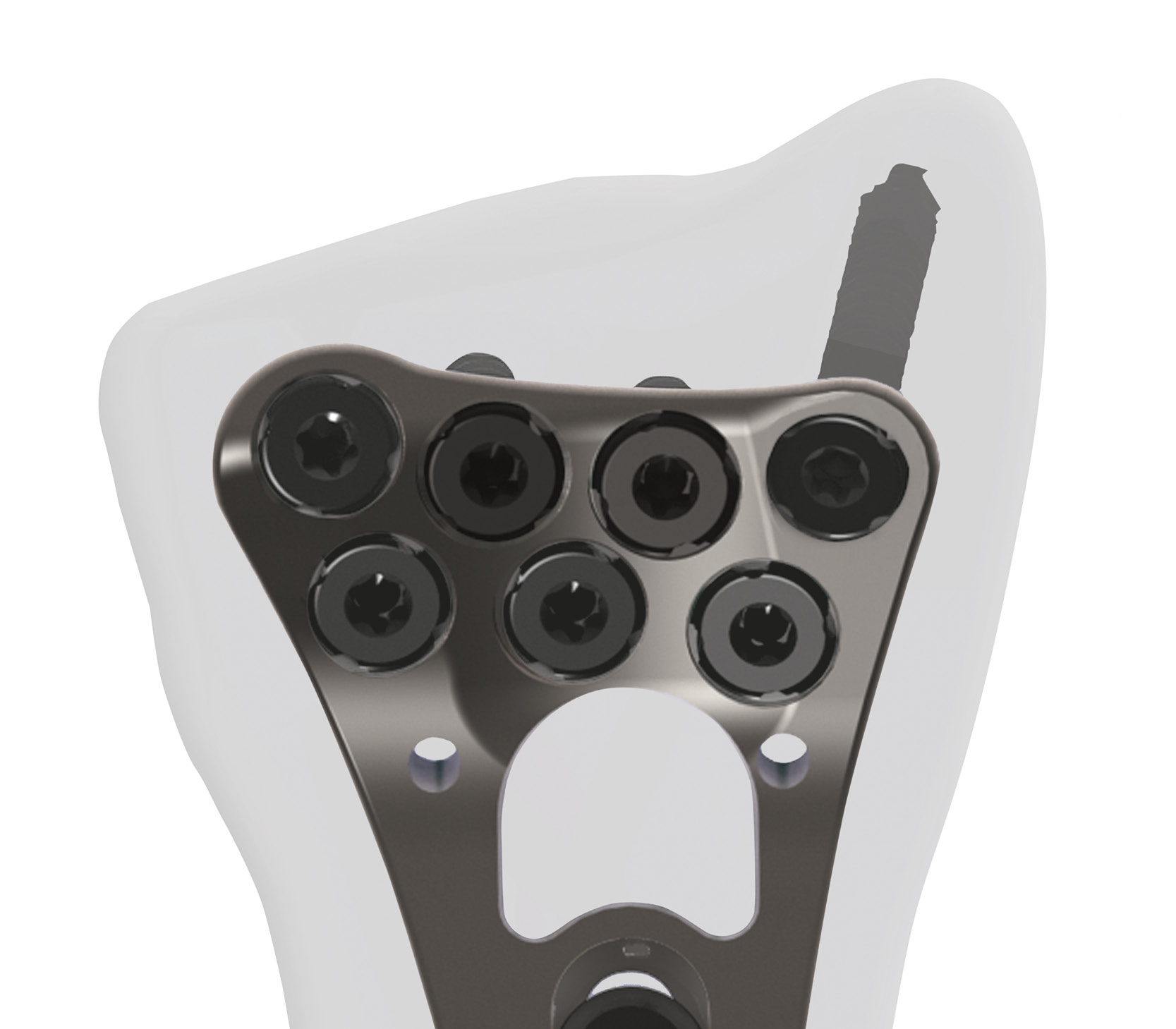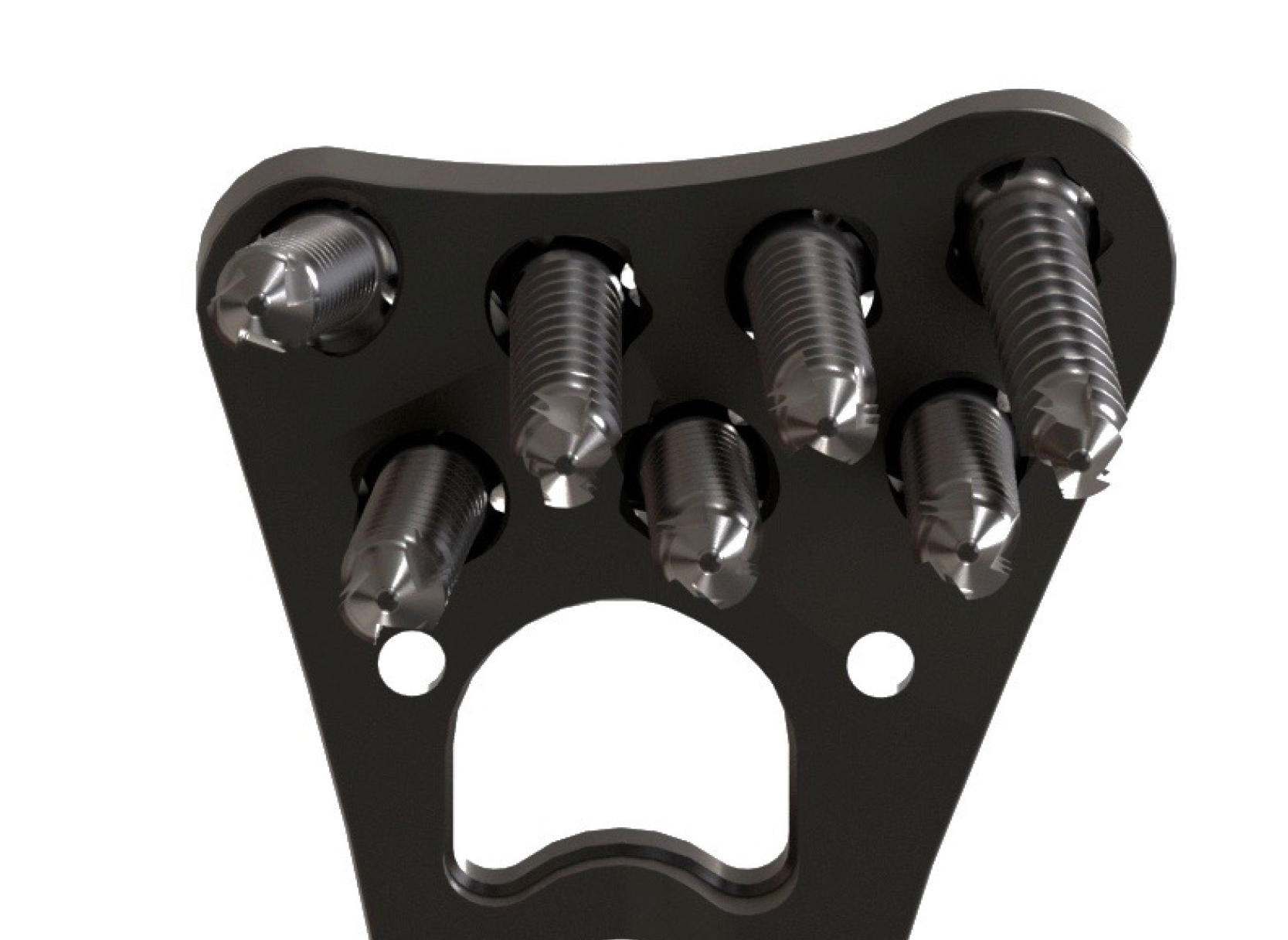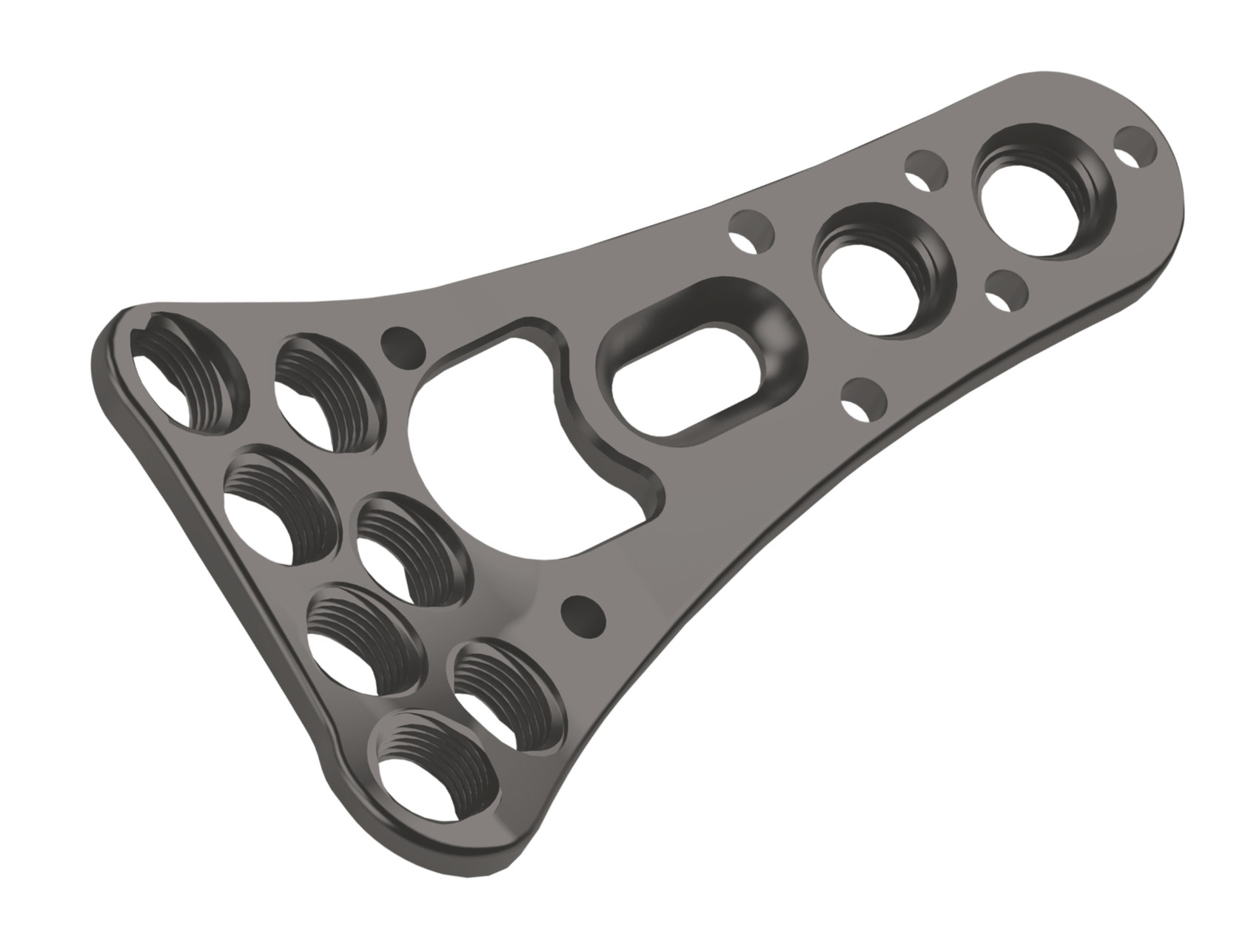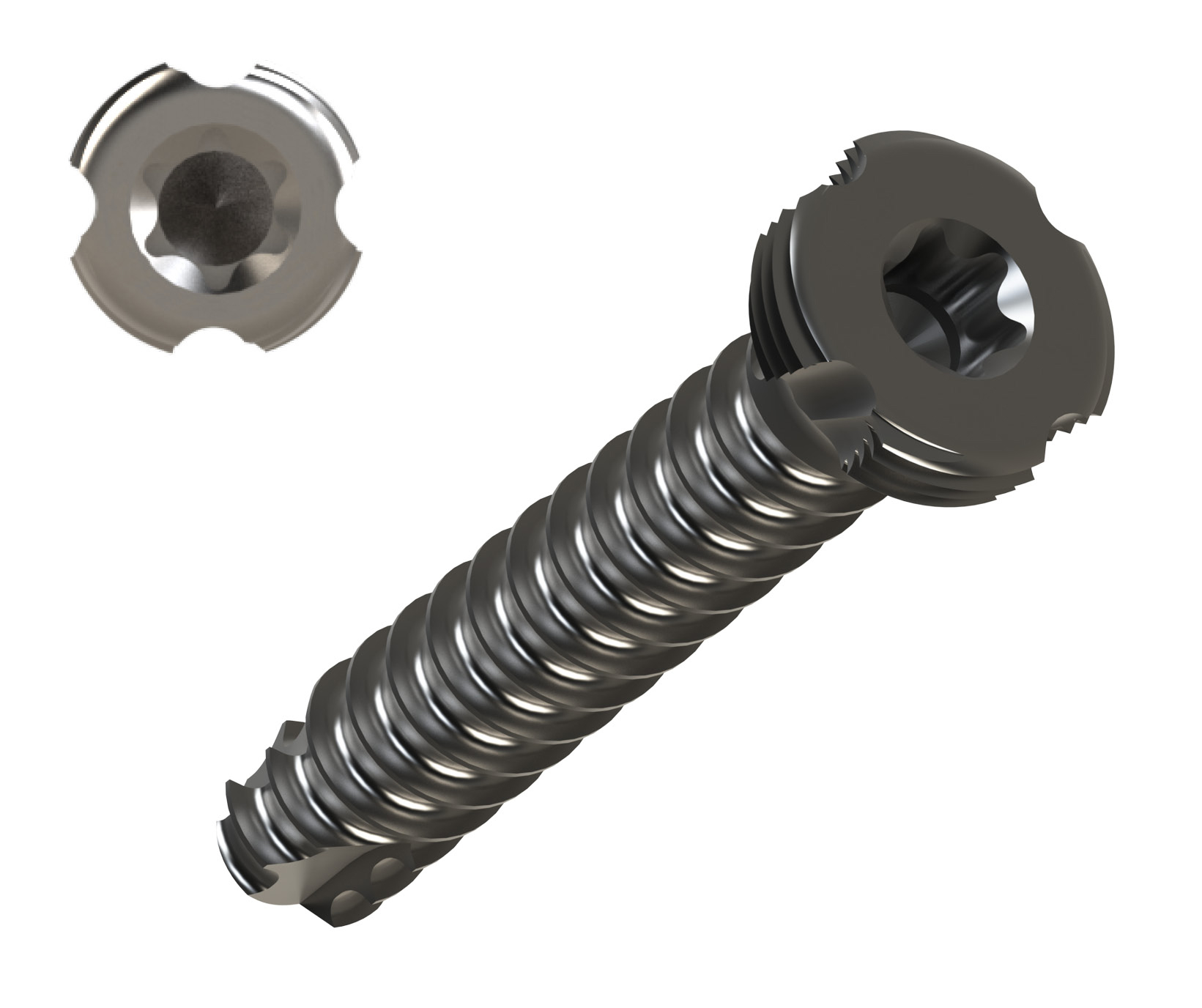2.7mm Distal-Radius-System
for the treatment of intra- and extra-articular fractures and osteotomies of the distal radius.
Surgical Technique Guide Clinical Case 1
The anatomical plate design is especially adapted to the 'Watershed' line and allows for an optimal placement of the distal screws to fix the fragment line and support the subchondral surface while reducing the risk of flexor tendon irritations.
Two distal rows of screws provide a stable fracture support, with the first row stabilizing the central articular surface and the second row stabilizing the dorsal portion.
Two distal rows of screws provide a stable fracture support, with the first row stabilizing the central articular surface and the second row stabilizing the dorsal portion.

The polyaxial locking head screws enable multidirectional insertion at an angle up to 15° (off-axis screw angulation) in all directions and therefore provide the necessary intraoperative flexibility to individually consider particular fracture patterns.

Rounded edges, the slim plate profile, the smooth coated surface as well as screws that sit flush on the plate reduce the risk of irritation of the surrounding soft tissue.
Dedicated Kirschner wire holes in the plate allow for temporary Kirschner wire fixation to facilitate the positioning of the plate on the bone.
Dedicated Kirschner wire holes in the plate allow for temporary Kirschner wire fixation to facilitate the positioning of the plate on the bone.

The special surface coating of the plates and screws (Type II anodization) favours a simplified removal of the implants after fracture healing.
The T7 screw drive ensures optimal force transmission, reduces the risk of deformation of the screw drive and allows for self-retention of the screw on the screwdriver.
The T7 screw drive ensures optimal force transmission, reduces the risk of deformation of the screw drive and allows for self-retention of the screw on the screwdriver.
